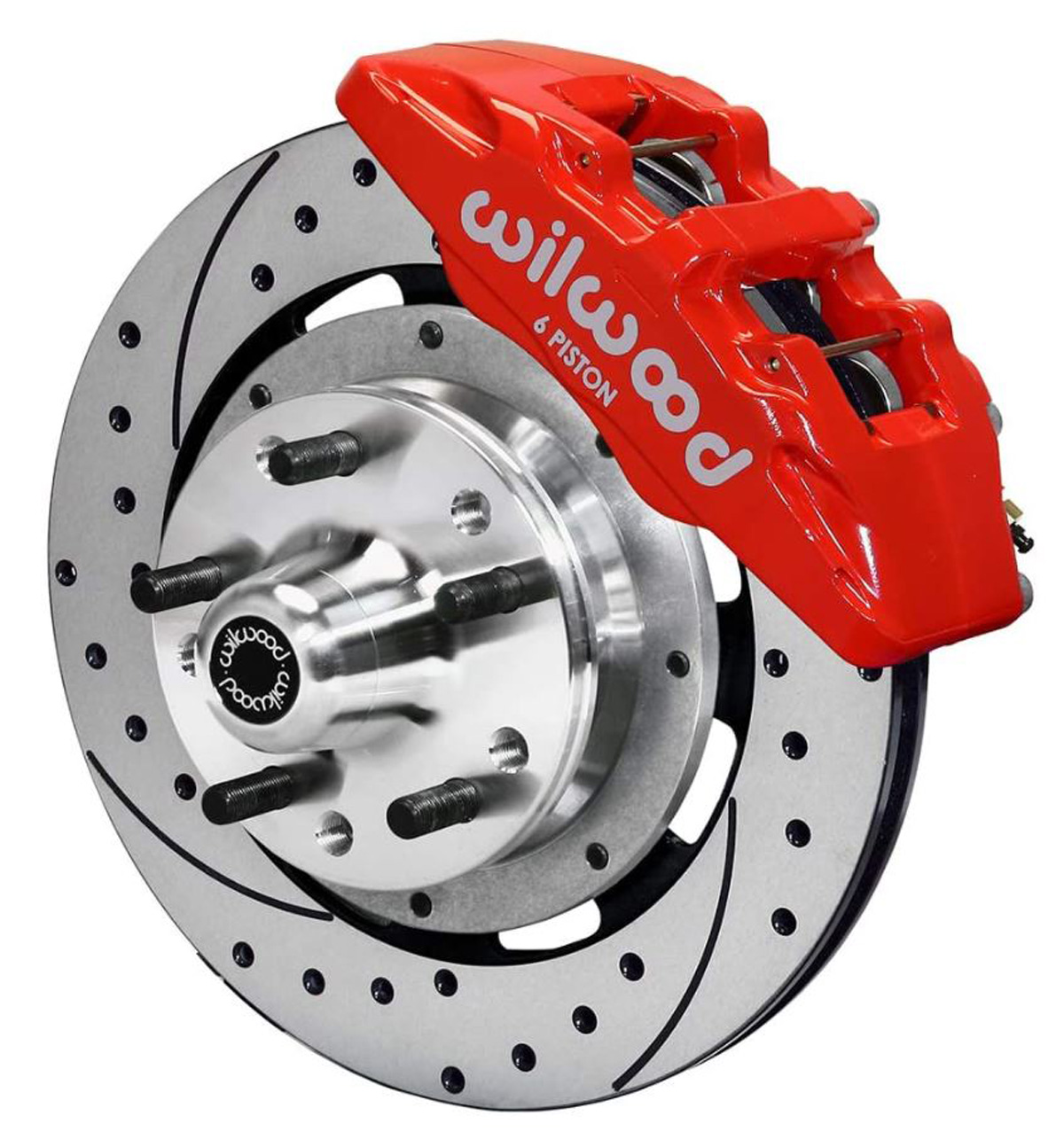FYI - I understand that it is a disc / disc combination valve you have there. It may have been in the zone for your previous combo as part of a matched braking package, but it is going to be a crap shoot now as to how it handles the changes to the new front disc upgrade, along with now being hydroboost powered. Here is the statement in the Wilwood instructions from the brake kit you installed:

Most disc / disc block style proportioning blocks like you have limit back pressures to the rear brakes too much, as the engineering inside of them are purposely designed that way to make sure the rear end doesn't possibly come around on you during strong braking. The problem is that they are always detuned to the point of having the rear brakes do approximately 20-25% less than what they really should be doing, especially if you have good amount of tire size back there. The idea behind that thinking is that it is considered less dangerous for your front brakes to lock up before the rear brakes would. With this internal preset tuning, you essentially lose your ability to steer the vehicle with the front brakes locked up, but at least the rear of the vehicle doesn't try to come around on you. That's how these are calibrated. In a matched set of brakes front / rear, this may end up being somewhat in the zone, but now you have changed that by putting stronger front brakes into the scenario, but did not put the matching set of Wilwood brakes in the rear. Having a matched set of front and rear brakes provides the initial proper front to rear balance by providing appropriately sized caliper pistons, pad compounds, and rotor diameters. Mixing brake combos of new upscale brakes up front while retaining the old rear discs from a different package screws this balance completely up. The reality is that this now results in the rear brakes actually doing even less than they used to, and now there is nothing you can do about it save for following up with the installation of considerably more aggressive pad compounds in the rear, swapping in calipers with larger piston sizes, or ideally following up with an upgrade to the Wilwood specified matching rear brake kit. That's why an adjustable proportioning valve should have been installed instead of retaining the non adjustable block style proportioning valve, as you could have simply tweaked the setting around to adjust for the mismatch of front to rear brakes you now currently have. Having the front to rear brake bias tuned in just right is typically worth about 25 feet less stopping distance from 70 MPH, which can be the difference between smashing your car or not.
Next, take a look at this image of your front brake kit:

What you see is a machined rotor in this image. This isn't stated in the instructions other than to say this brake kit is to be installed by a person qualified, experienced, and competent in the installation and maintenance of disc brakes. That very wide and general statement doesn't specifically say this, but the image shows what it should look like once installed. What am I referring to? 2 piece rotor designs will always have some run out, even if the bolts are very carefully torqued in proper sequence. This means that the rotors need to be put onto a brake lathe and a light cut be performed to insure that any runout is removed before final installation, especially in scenarios like this brake package that have fixed / non floating caliper designs. I have never seen a two piece rotor design that has zero runout in it, typically having to machine off anywhere from 15-25 thousandths to get them trued to prevent brake pulsation. A person qualified, experienced, and competent in the installation and maintenance of disc brakes knows that these rotors must be machined before road use is attempted.
Additionally, and very importantly, while that black coating on your rotors may look cool, it really is a pestilence if not machined off of the friction areas before road use. If this coating is not removed, the pads will have to wear through it, initially causing the braking to be WAY grabby and overly aggressive. We get tech calls from customers complaining that their braking actions are undriveable - like an ON / OFF switch being too grabby to drive. We ask them if their brakes at the wheels are brand new, and if the rotors are coated, and they
always say yes. We then inform them that this coating was to be machined off prior to running the brakes, and that this coating is now leaving unwanted deposits on the brake pads which leads to grabbing, along with heavy brake pulsation until all of the coating is worn off by the pads. The bad news there is that the coating doesn't wear off evenly, smearing around leaving a considerable amount of TV (thickness variation). When this is happening, you will see uneven patches of black and silver on the rotor friction areas. Some get lucky by taking the vehicle out for a heavy pound session to wear off the coating, but most end up having to pull their rotors back off and have them machined. When this happens, we also recommend the pads have a few thousandths milled off of the friction areas to remove the burnished in coating out of them, or replace the pad set entirely...





